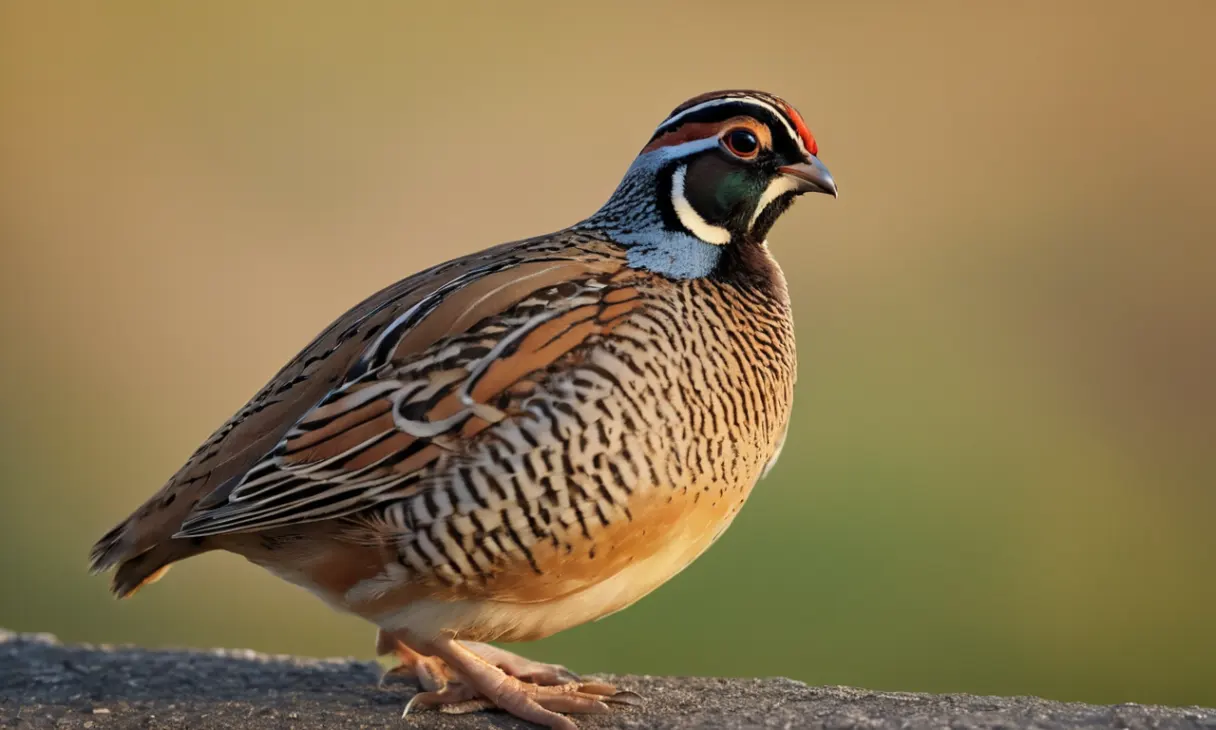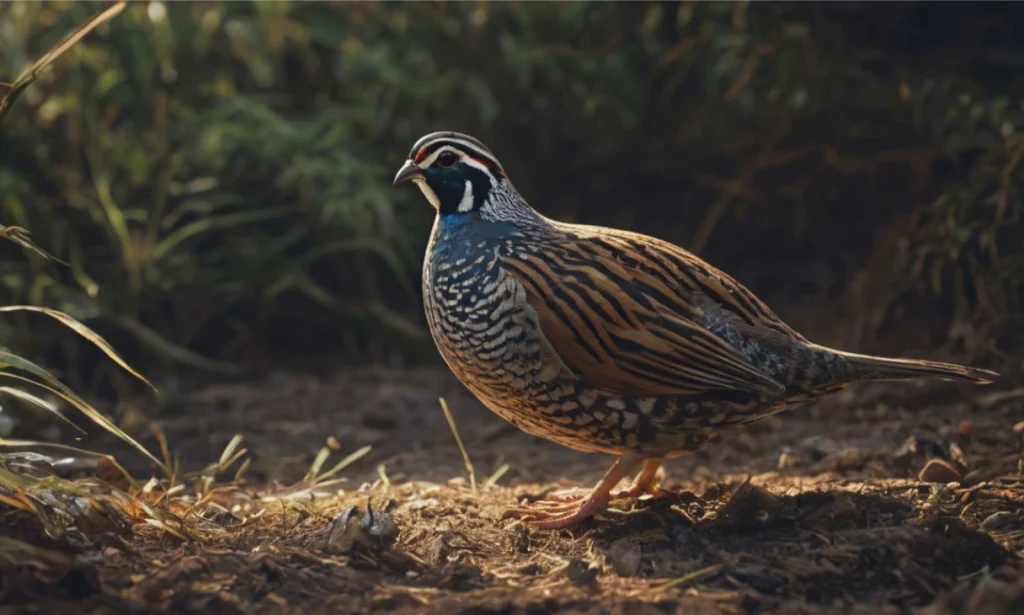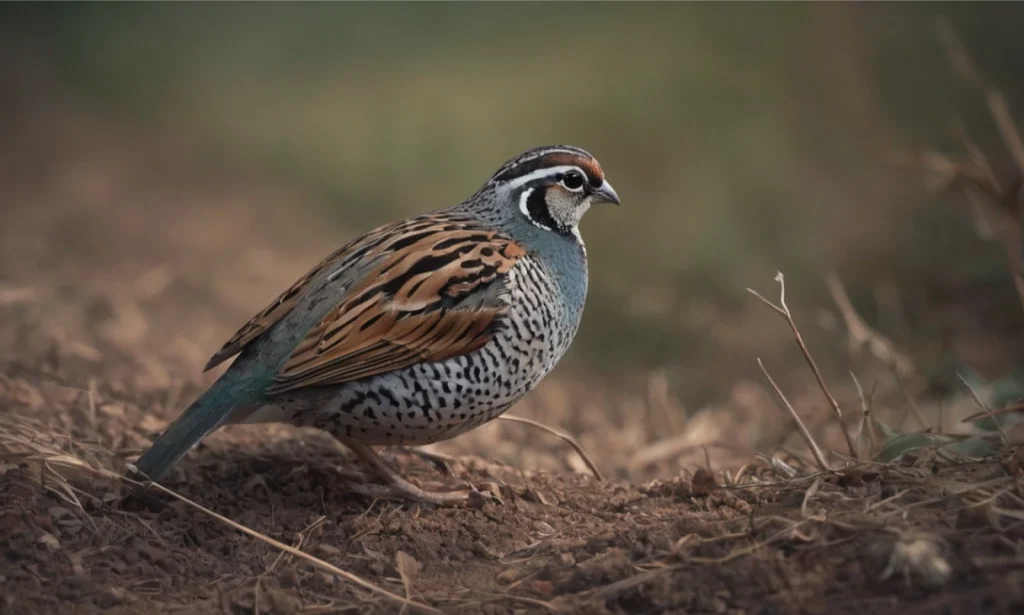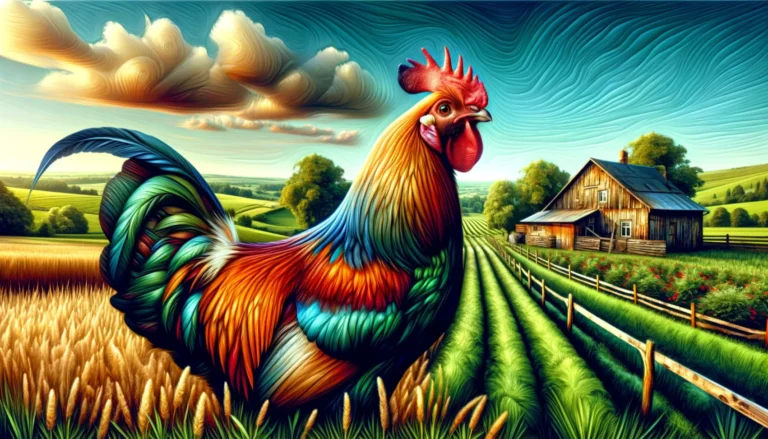Quail Symbolism

The quail is a fascinating bird that has significant symbolic meaning across various cultures. This guide will provide a comprehensive look at quail symbolism, including its origins, cultural significance, common interpretations, and more. We’ll also address frequently asked questions to give you a well-rounded understanding of what quail represents.
What is the Origin of Quail Symbolism?

The quail has been a revered bird for millennia across various societies. Ancient Egyptian hieroglyphics depict the quail as a hieroglyph meaning “wish” or “will.” In Biblical times, quail were the birds that miraculously appeared in droves to feed the Israelites during their exodus from Egypt. This event cemented the quail’s symbolism of providence and good fortune.
Across Native American tribes, the quail is featured prominently in folklore and rituals. The Cherokee associated quail with warmth and shelter, while other tribes saw the quail as a sign of rain. Overall, North American tribes imbued the quail with optimism and hope.
How Does Quail Symbolism Vary Across Cultures?

While the quail represents optimism and providence in many cultures, there are also some distinct interpretations:
- Christianity: Quail symbolizes God’s provision and deliverance. The mass migration of quails sustained the Israelites after fleeing Egypt.
- Ancient Egypt: The quail hieroglyph represented wishes coming true. It was seen as a positive omen.
- Native American: Cherokee traditions saw quail as bringing warmth and community. Other tribes saw it as foretelling rain.
- Ancient Greece: Quail feathers were tied to the arrows of Greek gods, symbolizing potency and masculinity.
- Asia: In countries like China, quail symbolizes love and care between couples. Their monogamous mating habits are admired.
So while optimism and providence unite quail symbolism globally, specific details change across cultural lines. The unifying thread is the quail representing hopefulness and renewal.
Can Quail Have Multiple Symbolic Meanings?

Yes, the symbolic meaning of quails can vary depending on different factors:
- Context: A quail’s solitary cry in the wild may signify sadness and longing. But a flock of quails represents the community.
- Interactions: Hunting quail conveys a different meaning than observing them peacefully.
- Mythology: Quails symbolized masculinity for the Greeks, based on stories of gods using their feathers on arrows.
- Migration: The vast quail migrations represent providence and abundance. Seeing them fly together inspires optimism.
- Coloration: Some quail species have unique plumage, like the Ocellated Quail. This can add special meaning.
So quails can take on different symbolic meanings through factors like group vs. solitary quails, hunting vs. observation, migrations, myths, and appearance. But their core associations with optimism and overcoming challenges remain constant.
Quail Symbolism Across Cultures

Here is a table summarizing some of the notable symbolic representations of quails across various cultures globally:
| Culture | Quail Symbolism |
|---|---|
| Christianity | Fulfilled wishes, a good omen |
| Ancient Egypt | Fulfilled wishes, good omen |
| Native American | Shelter, community, rain |
| Ancient Greece | Potency, masculinity |
| Asia | Love, marriage |
This table illustrates the nuances of quail symbolism between cultures, while still retaining an overall positive meaning.
Quail Symbolism in Dreams

When quails appear in dreams, this can signify:
- Love or lust – Quails represent intimacy and eroticism in dreams. It may signify a desire to explore new romantic or sexual connections.
- Overcoming challenges – Seeing quails take flight in dreams can symbolize triumphing over hardships. You may overcome obstacles.
- Abundance – A flock of quails in a dream may represent prosperity and good fortune entering your life soon.
- Happy surprise – If you dream of hunting quail successfully, this indicates a sudden positive surprise is on the way.
So dreams with quails are generally interpreted as positive omens, relating to emotions, challenges, prosperity, and fulfillment. The core symbolic meaning of optimism shines through in quail dream symbolism.
Quail Encounters and Omens
Quails can also deliver symbolic meaning when we encounter them in the waking world. Here are some common interpretations of quail omens:
- A quail crying plaintively may symbolize grief or a yearning for home. But hearing a flock’s upbeat chorus signifies joy and community.
- Seeing quails huddled together represents closeness and “circling the wagons” during difficult times.
- Observing quails calmly feeding shows a period of contentment and harmony.
- Witnessing quail chicks conveys new beginnings, renewal, and innocence.
- A quail nest signifies making a home, domestic satisfaction, and maternal instincts.
Overall, quail encounters provide insights into emotions, relationships, and personal circumstances beyond our surface perceptions. Their behavior acts as a mirror to reflect deeper meanings.
Quail Messages as Spirit Animals

Individuals with quail as their spirit animal tend to share common traits and characteristics:
High awareness – Quail people are very observant and alert to subtle signals. They thrive when able to analyze their surroundings.
Social connections – Having busy social lives and thriving in groups are hallmarks of quail spirits. They build strong communities.
Nurturing – Quail souls care deeply for friends and family. They express their affection openly.
Agility & speed – Like their bird counterparts, quail spirits think and act quickly. They excel at rapid responses.
Challenge-seeking – Quails are ambitious birds that migrate vast distances. Quail souls seek out lofty goals and new horizons.
Easily startled – However, quail spirits may also be anxious and jittery when threats seem near. They must cultivate peace.
Overall, quail souls have many gifts: perception, social bonds, caregiving, quick wit, ambition, and heart. Understanding these qualities brings self-awareness.
Quail Symbolism in Mythology
Quails feature prominently in myths and folktales across the world’s cultures. Here are some noteworthy examples:
- In Ancient Greece, Aphrodite the goddess of love was said to have been born from the sea cradled on a raft of quail feathers. This cemented the quail’s association with romance and sexuality.
- Artemis, the goddess of the hunt, reportedly captured and harnessed wild quails to pull her chariot when tracking the game through forests and fields. Hence quails were linked with untamed freedom.
- In a Cherokee folktale, a hunter promises to marry the daughter of the Quail Chief in exchange for leading him to the game. But when he kills too much game, the Quail Chief punishes him by turning him into a wolf forever unable to hunt quail. This portrayed Quail as demanding ethical treatment.
- Ancient Egyptian tombs show depictions of quails nipping at grapes and resting near jars of wine, as it was believed the birds could predict the quality of the wine harvest. So the quail became an omen of bounty.
These myths underscore how quail symbolism taps into ideals of passion, liberty, ethics, and abundance across human cultures.
Quail Symbolism in Literature

Symbolism related to the quail’s habits and traits appears in literary works over the centuries:
- Poet Robert Frost uses the quail’s distinctive “wet-my-foot” cry in his poem “Come In” to set an autumnal mood of melancholy longing for a lost love.
- In Shakespeare’s Hamlet, Hamlet calls himself a “quail” to describe feeling suddenly shaken and overwhelmed when confronting grief and trauma, due to quail’s skittish nature.
- John Steinbeck evokes the quail’s family loyalty in Of Mice and Men, writing “the quail is a living group, and all its members protect each other.”
- Aldo Leopold’s nature memoir A Sand County Almanac admiringly depicts quails forming a “covey” and sticking loyally together, representing the community.
- The quail’s spring mating ritual comes to symbolize possibility and romantic renewal in T.H. White’s The Once and Future King: “The madness of love is the greatest of heaven’s blessings.”
So from poetry to classics, quail symbolism emphasizing qualities like melancholy, anxiety, togetherness, and sexuality frequently appears in impactful literature.
Key Takeaways on Quail Symbolism
- Quail represents optimism, overcoming challenges, and renewal across cultures globally.
- Specific meaning can vary based on context like solitary vs. flocks, or interactions like hunting vs. passive observation.
- Dreams about quails signify positive omens related to emotions, prosperity, or surprising gifts.
- Quail spirits reflect observant, quick-witted, nurturing, and ambitious qualities.
- Myths underscore quail symbolism linked to love, freedom, bounty and morality.
- Literature uses the quail to symbolize yearning, anxiety, loyalty, and romantic excitement.
- But the core symbolic essence of quail is one of hopefulness and determination to press forward.
Understanding the origins, variations, interpretations and literary history of quail symbolism provides a richer appreciation of this bird’s cultural significance across continents and centuries. The quail truly encapsulates the human experience of resilience.

Frequently Asked Questions About Quail Symbolism
What do quails represent in Christianity?
In the Bible, quail represents divine providence and deliverance. When the Israelites were wandering in the desert after the Exodus, God caused vast numbers of quail to appear around their camp to provide meat. This symbolized God’s grace and care for his followers.
Do quails mate for life?
Yes, quails form monogamous pair bonds and typically mate for life. The male and female quail will stay close together while nesting, caring for young, migrating, and surviving the winter. Their loyal behavior is reflected in cultural symbolism of commitment and fidelity.
Why do Native American tribes appreciate the quail?
Tribes like the Cherokee saw the quail as a sign of shelter and community. The quail taught them how to work collaboratively and care for one another in challenging conditions, like huddling together in a covey against the cold. Overall, Native Americans saw the quail as an inspiring example of optimism.
What’s the difference between a quail and a partridge?
While they look similar, partridges are a different genus and species than quails. Partridges have feathered feet, while quail have featherless, scaly feet. Partridges are also larger on average. Confusion arises because partridges are sometimes called “grey partridges” while quails are called “bobwhite quail” leading to mix-ups between the two birds.
Why do quails migrate in such large groupings?
Quails form large flocks called “coveys” that can contain hundreds of birds migrating together. This offers protection from predators through numbers and visibility. It also makes finding food, water, and shelter easier when birds work collectively. Their cooperative migrations reflect their overall symbolic themes of community, perseverance, and unity.
So in summary, the quail is a fascinating bird on many levels – from its importance in ancient myths to its modern symbolism of passion, community, and determination. This guide covered the key contexts for understanding the deeper essence associated with this beloved bird across cultures. Next time you encounter a quail, whether in real life or art, literature, or dreams, you can appreciate the rich symbolic dimensions it represents.





